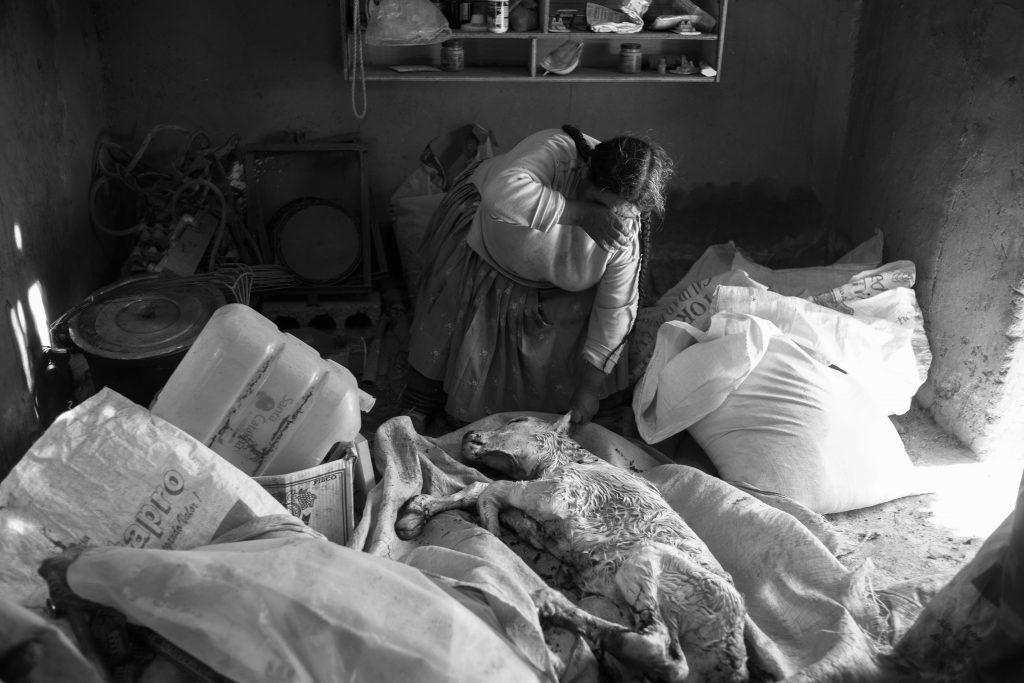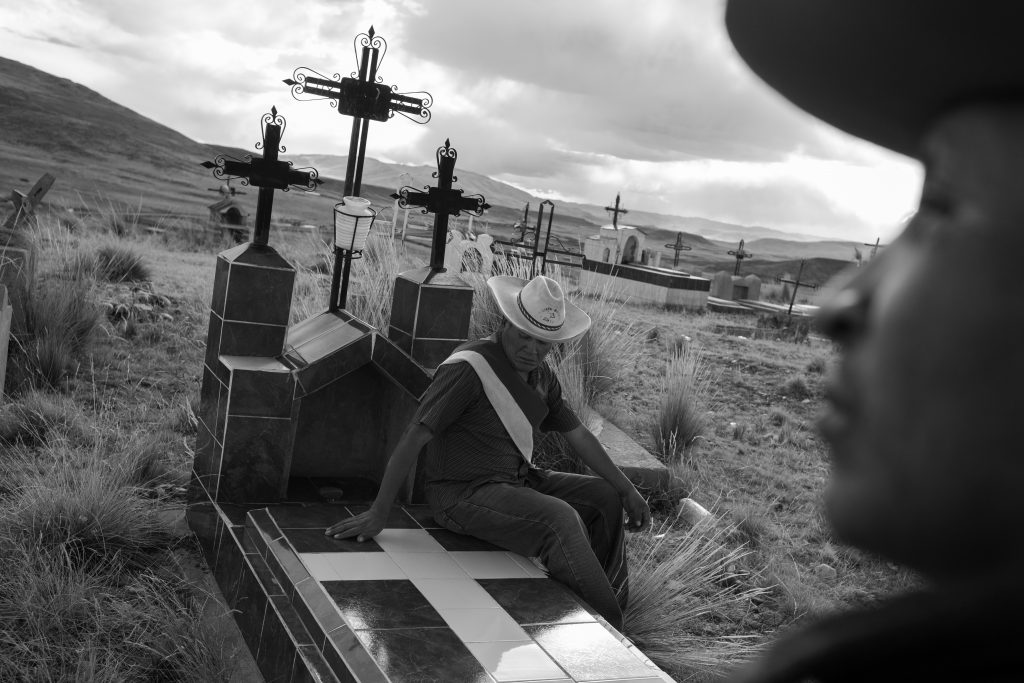by Dario Orlandi
_
With Espinar, Broken Land Italian photographer Alessandro Cinque is among the 12 finalists of the W. Eugene Smith Memorial Fund grant, one of the most prestigious international competitions dedicated to documentary photography. The award is open to projects started but not yet completed; to the winner, the foundation offers the necessary coverage to finish the work.
Waiting for the award ceremony, scheduled for October 17th in New York, we met Alessandro to learn about the story with which he was selected and how he intends to continue it in the future.

What is “Espinar” about?
The project takes its name from a southern province of Peru where, over the past decades, traditional agriculture has been gradually replaced by mining, activity managed by foreign multinationals, and that had very serious repercussions on the territory and on indigenous people.
The mining companies, after obtaining concessions from the central government, buy the land from peasants enticed by the possibility of a quick and easy gain and by promises of work opportunities and services to the community which, most of the times, are then disregarded. Once the money is over, the farmers, now deprived of their land, have no chance of working on a parched land, contaminated by mining residues and on which pollution and related illnesses have begun to spread.

How did the project idea come about?
I learned about the problems related to copper mining in Peru during my first trip to South America in 2017 and I immediately felt a strong personal interest in the issue.
I contacted an Italian anthropologist who deals with the topic, thanks to whom I came into contact with a Peruvian journalist who helped me to investigate the problem and to plan my subsequent photographic research.

How many times have you been to Peru?
Four: during the first 3 trips (in 2017, 2018 and in the spring of 2019) I focused on the area of Espinar, which gave the name to the first part of the project.
I then returned in August 2019 to broaden my outlook to the entire mining corridor which, starting from the Las Bambas mine in the Apurimac region, crosses the province of Espinar (we are in the Cusco region, just south of the town of the same name) and reaches the Matarani port in the Arequipa region, on the Pacific. Every day about 1500 trucks pass through the corridor carrying 40% of the copper extracted in Peru, the world’s second largest producer of the precious metal.
In the area of the Las Bambas – where the extraction of copper concentrate began in 2015 – we do not yet see the long-term harmful effects which are evident in Espinar, but we are already witnessing the spread of the short-term ones: urban degradation, diffusion of prostitution and sexually transmitted diseases, collapse of tourist market and agricultural activities due to soil contamination.
What are the next steps you have in mind?
I intend to move to Lima in February 2020 to continue the project by documenting the mining area of Cerro Verde, another key territory of the mining corridor. Contextually, I’m planning to document the trends of the precarious political situation in the country and the controversial position of the Peruvian government with respect to the mining activities on its territory.

The last few years have been full of important awards for you: you were Leica Ambassador, you won an “award of excellence” at POYI in 2018 and the first prize in the same competition of 2019 for the Issue Reporting Picture Story. Now you are finalist for the most prestigious world grant for documentary photography: what does this milestone represent for you?
Being in the final at Eugene Smith, which has awarded, over the years, the ones that I have always considered my models in the world of photojournalism, is obviously a source of great satisfaction. However, the thing that especially rewards me is the possibility of giving a voice to the indigenous people whose rights are often forgotten by the Peruvian state and violated by mining companies.
All images: © Alessandro Cinque
October 3, 2019




